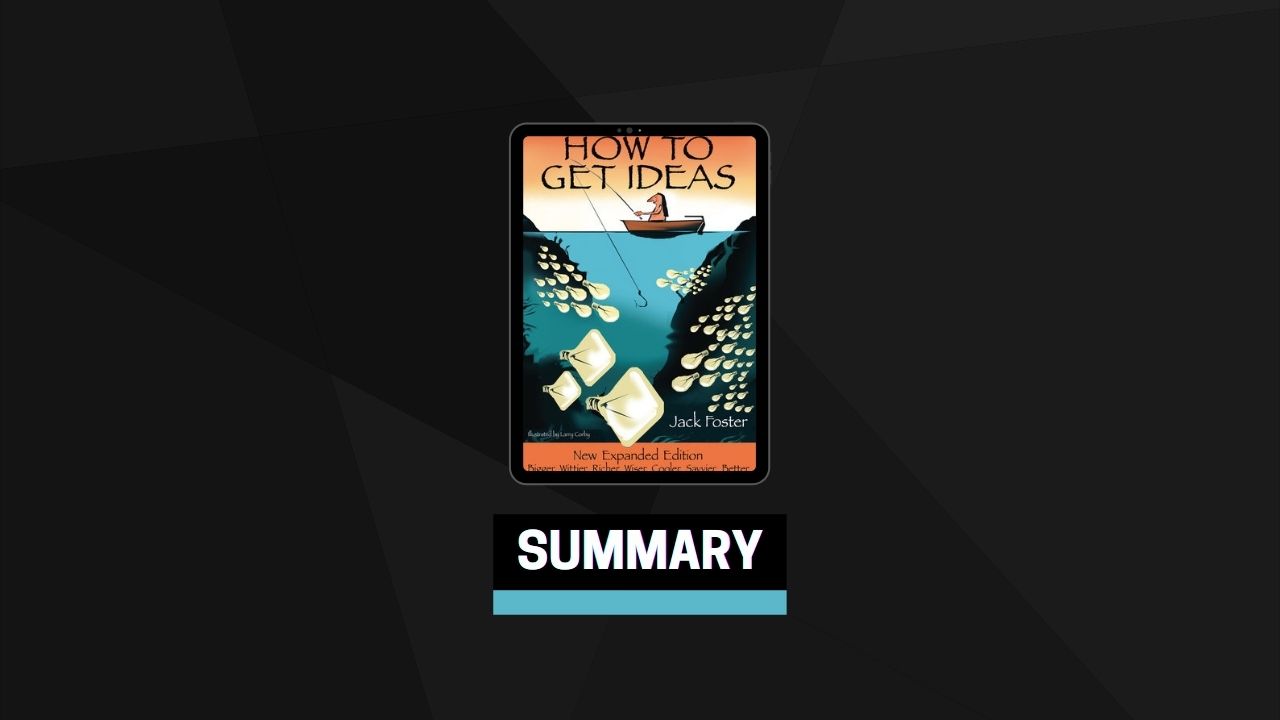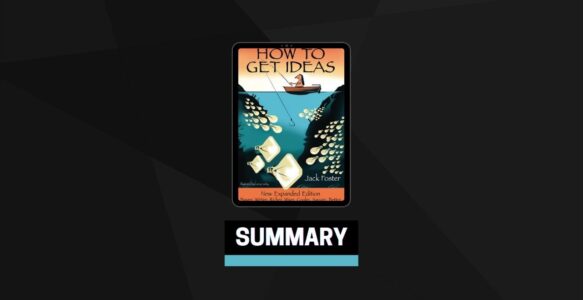Have Fun
Tom J. Peters agrees: “The number one premise in business is that it need not be boring or dull,” he wrote. “It ought to be fun. If it’s not fun, you’re wasting your life.”
Don’t waste yours. Have some fun.
And not so incidentally, come up with some ideas.
Be More Like a Child
Let the child in you come out. Don’t be afraid.
Most businesses reward people who come up with new ideas. And one of the ways to come up with new ideas is to be more like a child.
So next time you have a problem to solve or an idea to come up with, ask yourself: “How would I solve this if I were six years old?” “How would I look at this if I were four?”
Loosen up. Run down the hall someday at work. Eat an ice cream cone at your desk. Take everything out of your desk drawers and put it on the floor for a couple of days. Rearrange your office furniture. Take a nap after lunch. Draw pictures on your window with a felt-tip pen. Write notes with crayons. Sing out loud in the elevator. Pound the piano. Stand up in the boat. And then rock it.
Have fun.
Become Idea-Prone
Computers and faxes and modems and e-mail and the Internet and voice mail and cell phones and networking were all supposed to make our lives simpler and easier. We were supposed to have more time than ever to come up with ideas.
But for many—perhaps for you—the reverse happened. Downsizing stole the time that electronics created. And now it seems you have less time to do twice as much. And that squeeze is starting to panic you.
Well, relax. You know the idea is out there. And you know that you’re going to find it.
So don’t worry about time. Although some ideas take longer to get than others, getting an idea does not depend, strangely enough, upon time. Nor upon workplaces or schedules or even workloads.
You can search for an idea while you’re eating lunch or taking a shower or walking your dog. And you can find it in the instant you start your car or snap on a light.
Getting an idea depends upon your belief in its existence. And upon your belief in yourself.
Believe.
Visualize Success
If your mind can control the way your body behaves and acts on twelve inches of steel forty floors up, or on a baseball field when a ball is hit, or in front of a dart board, or on a basketball court—if your mind can control the way your body works to that extent, just think of the way your mind can control the way your mind works.
So if you want to get ideas, imagine having gotten them.
Visualize the scene the way the students visualized the ball going in the hoop, the darts into the target.
Visualize it the way divers visualize the dive, pool players the shot, tennis players the slam, golfers the putt.
Do not imagine that you will get the idea. Imagine that you already have it. Imagine being praised and thanked and rewarded.
There’s a good chance you will be.
Rejoice in Failure
When you fail, it changes your mind set, the way you look at life.
Failing makes you fearless. Failing sets you free.
Perhaps Jerry Della Femina, the famous advertising man, said it best:
Failure is the mother of all creativity. My advice to anybody who wants to be creative is to get into something that will fail. I’ve failed at a lot of things in my life and I hope to fail at a lot more. Most people are afraid to fail, but once you’ve done it you find out it’s not that terrible. There’s a sense of freedom that you get from taking chances.
So don’t hide your failures or be ashamed of them.
Wear them with pride. Revel in them.
Get More Inputs
Tomorrow morning on your way to work, or on your first coffee break, buy yourself a notebook. Not a loose-leaf notebook. Buy a ledger—something with a sense of permanence to it. Then every day write in it something that you’ve seen. Every day. It doesn’t make any difference what you see; only that you see something and record it. (If you also want to write what you think about what you see, feel free. After all, that’s what Thomas Wolfe and hundreds of other writers did and do.)
When your ledger is full, sit down and read it. Then start filling up another one. And another one. And another one.
For the rest of your life.
Screw Up Your Courage
An idea is delicate,” said Charles Brower, the head of an advertising agency. “It can be killed by a sneer or a yawn; it can be stabbed to death by a quip and worried to death by a frown on the right man’s brow.”
I think this is why many people seem bereft of ideas.
They’ve run into too many sneers and yawns, they’ve heard too many quips. And so they’ve said the heck with it and don’t even try to come up with ideas any more.
The fear of rejection shuts down their idea factories.
I can’t tell you how to get enough courage to push ahead, to ignore the doubts and raised eyebrows and pooh-poohing you get when you tell people what you’ve got in mind.
All I know is that you must.
A Five Step Method for Producing ideas
#1 Define the Problem
Since all problems have solutions, it’s critical that you define your problem correctly.
If you don’t you might solve the wrong problem.
If you’ve been asking “How do I get the salespeople to make more calls?” try asking “How do I get my salespeople to make fewer but more qualified calls?” Or “How do I get my salespeople to convert more of the calls they do make?” Or “How do I get my salespeople to call on more prospects at the same time?” Or “How can I get the prospects to call on my salespeople?” Or “How do I make it unnecessary for my salespeople to call on customers?”
Different questions, different answers, different solutions.
#2 Gather the Information
Read books. Read magazine articles. Read newspaper articles. Consult the encyclopedia. Become more like a child again—ask questions. Ask why. Ask why not. Visit the plant. Visit the warehouse. Talk with the workers. Talk with the suppliers. Work in the store. Ride with the salespeople. Seek out customers and talk with them. Seek out noncustomers and talk with them. Seek out your competitor’s customers and talk with them. Read your competitor’s annual report. Talk with the engineers. Talk with the designers. Work on the truck. Work in the field. Sample the product. Sample your competitor’s product. Go to lectures. Go to the library. Go to bookstores. Ask your friends. Ask your kids. Ask your mother.
But perhaps most important, put your mind on it.
It’s amazing what happens when you keep something in the forefront of your consciousness.
#3 Search for the Idea
Cliff Einstein, the head of an advertising agency, says: “The best way to get an idea is to get an idea.”
He means that once you have an idea, the pressure is off to have an idea.
He also means that ideas have a way of snowballing, that the best way to get the whole process going is to prime it with an idea, any idea. It doesn’t matter if the idea makes sense or solves the problem or is even germane, just as long as it’s something new and different.
I know this sounds crazy, but try it sometime. It really works. Say: “Why don’t we paint it green?” Or “What if . . .”
Thomas Edison’s tenacity is a legend. So is Johannes Kepler’s. And Albert Einstein’s. And Sir Isaac Newton’s. And Linus Pauling’s. And and and and—the tenacity list goes on and on.
Still, there comes a time—and it will differ with every person and every problem—when enough is enough. You’ve (to paraphrase Koestler) uncovered, selected, reshuffled, combined, and synthesized all the already existing facts, ideas, faculties, and skills you can. And the idea still eludes you.
When that time comes follow the advice in the next.
#4 Forget about It
In advertising, writers and art directors do this whenever they can. When they’re having trouble coming up with, say, ideas for a television commercial for a motorcycle and it isn’t due until next week, they put that assignment aside and start working on ideas for a newspaper ad on cheese, or for a billboard on a bank. A couple of days later they come back to the motorcycle assignment and, magically, ideas fill the room.
But what if you don’t have another project to work on?
Then get one.
The secret is to switch gears; to let your unconscious work on the problem that’s giving you trouble, while your conscious mind works on something else; to “sleep on” one problem while you start working on another.
#5 Put the Idea into Action
Will your enthusiasm for your idea be greater or lesser tomorrow? Then why wait?
Ralph Waldo Emerson said: “Nothing great is ever accomplished without enthusiasm.” And the more enthusiasm the better.
Besides, most of the time, waiting to start anything is wrong.
Get it going now. Once you break the inertia and start it rolling, an idea takes on a life of its own and starts going into areas you never dreamed it would fit in; it creates opportunities; it bowls over barriers and leapfrogs objections and overwhelms logic.
One of the best ways to commit yourself is to commit your money. Take some money out of your savings account or borrow some money from your brother-in-law, open up a checking account with it under the name of your idea, and spend some of it on something you need to do to get your project going.
That’s commitment. And commitment creates action.


